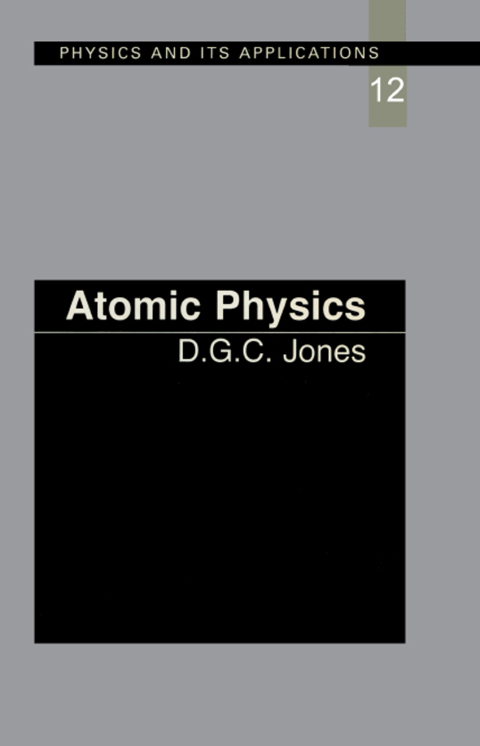Description
Efnisyfirlit
- Cover
- Half Title
- Title Page
- Copyright Page
- Table of Contents
- Preface
- Main symbols used in text
- 1 Introduction
- 1.1 The existence of atoms
- 1.2 The size of atoms
- 2 The structure of the atom
- 2.1 First models – the Thomson atom
- 2.2 Probing the atom
- 2.3 The nuclear model of the atom
- 2.4 Comparison of the model with experiment
- 2.5 The impossibility of the classical nuclear atom
- 3 The quantum mechanical picture of the atom
- 3.1 The electron as a quantum particle
- 3.2 Schrodinger’s equation
- 3.3 An electron in the electric field of the nucleus
- 3.4 Electron eigenfunctions
- 3.5 The physical meaning of the quantum numbers n, I, m
- 3.6 The hydrogen atom
- 4 Atomic spectra
- 4.1 Spectroscopy as a source of information about atoms
- 4.2 The general characteristics of gas discharge spectra
- 4.3 The hydrogen spectrum
- 4.4 Hydrogen-like spectra
- 4.5 Fine structure in hydrogen and hydrogen-like spectra
- 5 Fine structure of spectral lines and electron spin
- 5.1 Fine structure in the hydrogen spectrum
- 5.2 Calculation of the spin-orbit coupling energy
- 5.3 The quantized electron spin
- 5.4 Other causes of fine structure
- 5.5 The widths of spectral lines
- 6 The interaction of atoms and radiation
- 6.1 Absorption and emission of radiation
- 6.2 Equilibrium between atoms and the radiation field
- 6.3 The physics of the A and Β coefficients
- 6.4 Physical model of the field-atom interaction
- 6.5 Fermi’s ‘golden rule’ for transitions
- 6.6 Allowed and forbidden transitions.
- 6.7 Spontaneous emission
- 6.8 Spontaneous emission and the quantization of the e.m. field
- 6.9 States of the quantized radiation field
- 6.10 The photon
- 7 More complex atoms
- 7.1 Schrödinger s equation for more complex systems
- 7.2 The Pauli exclusion principle
- 7.3 The Aufbau principle and electron configurations
- 7.4 The periodic table
- 8 The helium atom and term symbols for complex atoms
- 8.1 Spectra and energy level diagrams for helium
- 8.2 Eigenfunctions for the helium electrons – singlet and triplet states
- 8.3 Energy eigenvalues
- 8.4 The effect of the electron-electron interaction
- 8.5 Term symbols and fine structure
- 8.6 Hund’s rules for energy level splitting
- 9 Further discussion of atomic structure
- 9.1 Hydrogen-like atoms
- 9.2 Helium-like atoms
- 9.3 The structure of carbon
- 9.4 Other elements
- 9.5 The calculation of atomic orbitāls
- 9.6 Self-consistent field calculation of eigenfunctions
- 9.7 The effects of spin-orbit coupling energy – coupling schemes
- 10 The atomic physics of lasers
- 10.1 Stimulated emission and amplification
- 10.2 The laser oscillator
- 10.3 Semi-classical theory of the laser
- 10.4 Mode interactions
- 10.5 Quantized-field laser theory
- 10.6 Practical atomic gas lasers
- 10.7 The argon ion laser
- 10.8 The helium-neon laser
- 11 Atoms in external fields
- 11.1 The Stern-Gerlach experiment
- 11.2 Atoms in homogeneous magnetic fields – the Zeeman effect
- 11.3 Strong magnetic fields – the Paschen-Back effect
- 11.4 Atoms in static electric fields – the Stark Effect
- 11.5 Intense electromagnetic fields – Rabi oscillation
- 11.6 Atomic beam experiments
- 11.7 The Lamb shift in hydrogen
- 12 Single atom experiments
- 12.1 Experiments on single electrons and ions
- 12.2 Trapping neutral atoms
- 12.3 The quantum ‘watched pot’
- 12.4 Cavity quantum electrodynamics
- Appendix A Rutherford’s scattering formula
- Appendix B Angular momentum operators
- Appendix C Time-independent perturbation theory
- Appendix D Time-dependent perturbation theory – the calculation of the Einstein B coefficient
- Appendix E Quantization of the electromagnetic field
- Appendix F The Pauli exclusion principle
- Appendix G Eigenstates in helium
- Appendix H Exercises
- Appendix I Further reading
- Appendix J Useful constants
- Index







Reviews
There are no reviews yet.